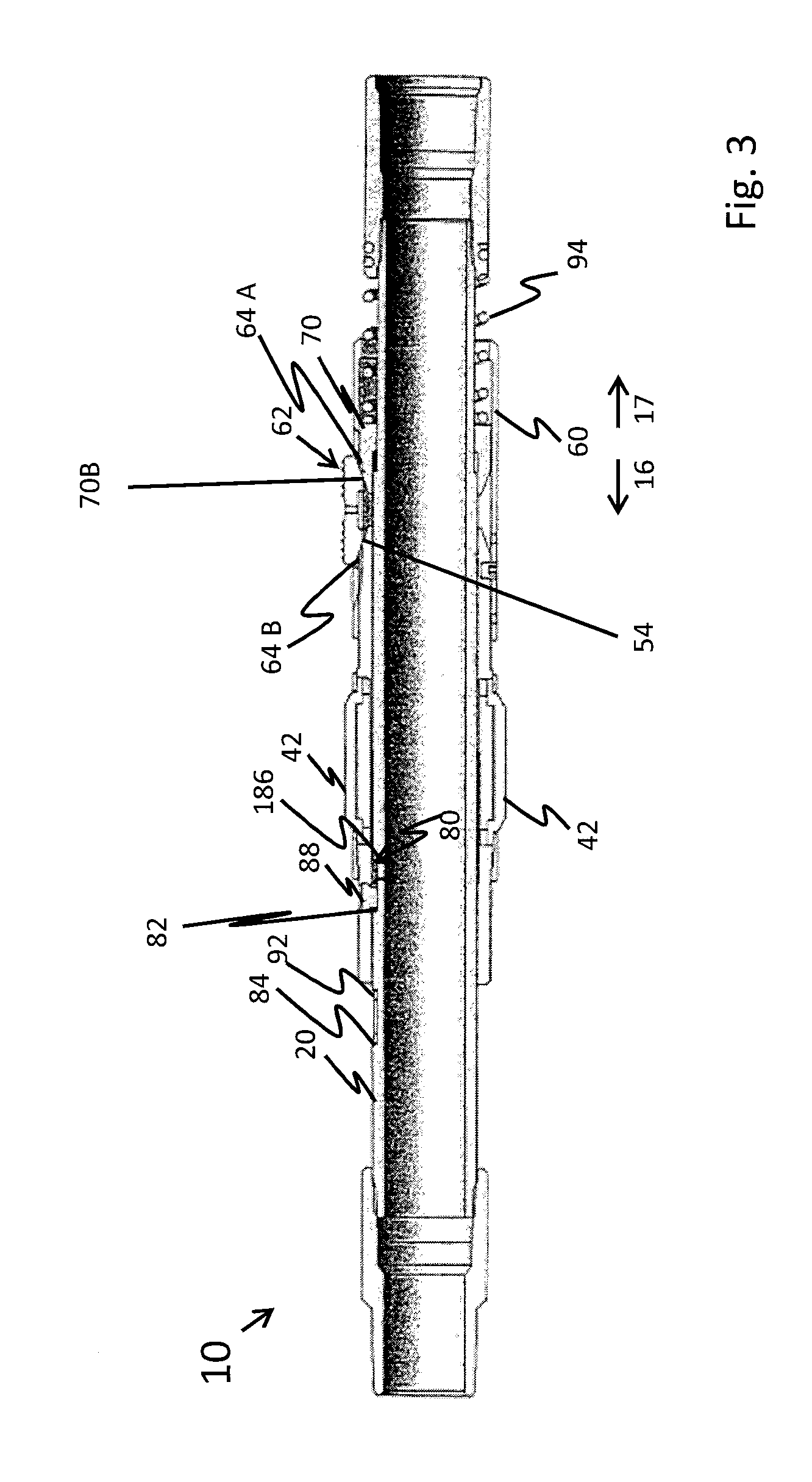Quarter turn tubing anchor catcher
a quarter-turn, tubing technology, applied in the direction of tubing catchers, fluid removal, borehole/well accessories, etc., can solve the problems of threaded parts being difficult to unset, threaded parts may be susceptible to corrosion, and threaded parts may be difficult to manufacture, etc., to reduce or stop the movement of tubing strings
- Summary
- Abstract
- Description
- Claims
- Application Information
AI Technical Summary
Benefits of technology
Problems solved by technology
Method used
Image
Examples
Embodiment Construction
[0023]FIGS. 1 to 8 depict one example embodiment of a tubing anchor catcher 10. The tubing anchor catcher 10 may be inserted within a well conduit 12 (see FIGS. 13 and 14), such as a wellbore casing. FIGS. 1 and 2 depict the tubing anchor catcher 10 in an unset, or “run-in”, orientation in which it can be run inside the well conduit 12 on a tubing string. Safety subs 14A, B may be attached to a mandrel 20 of the tubing anchor catcher 10 having attachment means, such as an inner threaded lower end 22 and an outer threaded upper end 24. In this embodiment, the tubing anchor catcher 10 may be run down the well conduit 12 while being threadedly connected within the tubing string in the downhole direction indicated by arrow 16. Arrow 17 indicates the opposite direction within the well conduit 12, namely the up-hole direction. It is noted, however, that terms such as “up”, “down”, “forward”, “backward” and the like are used to identify certain features of the tubing anchor catcher 10 when...
PUM
 Login to View More
Login to View More Abstract
Description
Claims
Application Information
 Login to View More
Login to View More - Generate Ideas
- Intellectual Property
- Life Sciences
- Materials
- Tech Scout
- Unparalleled Data Quality
- Higher Quality Content
- 60% Fewer Hallucinations
Browse by: Latest US Patents, China's latest patents, Technical Efficacy Thesaurus, Application Domain, Technology Topic, Popular Technical Reports.
© 2025 PatSnap. All rights reserved.Legal|Privacy policy|Modern Slavery Act Transparency Statement|Sitemap|About US| Contact US: help@patsnap.com



